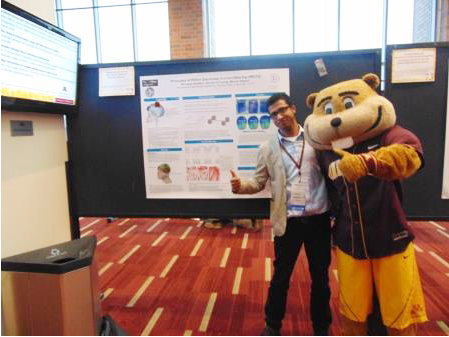Marom Bikson to be Inducted into Medical and Biological Engineering Elite
WASHINGTON, D.C.— The American Institute for Medical and Biological Engineering (AIMBE) has announced the pending induction of Marom Bikson, Ph.D., Professor of Biomedical Engineering, Department of Biomedical Engineering, City College of New York, to its College of Fellows. Dr. Bikson was nominated, reviewed, and elected by peers and members of the College of Fellows For outstanding contributions in the area of neuromodulation and the specific field of transcranial direct current stimulation of the brain.
The College of Fellows is comprised of the top two percent of medical and biological engineers in the country. The most accomplished and distinguished engineering and medical school chairs, research directors, professors, innovators, and successful entrepreneurs, comprise the College of Fellows.
AIMBE Fellows are regularly recognized for their contributions in teaching, research, and innovation. AIMBE Fellows have been awarded the Presidential Medal of Science and the Presidential Medal of Technology and Innovation and many also are members of the National Academy of Engineering, Institute of Medicine, and the National Academy of Sciences.
A formal induction ceremony will be held during AIMBE’s 2015 Annual Meeting at the National Academy of Sciences Great Hall in Washington, DC on March 16, 2015. Dr. Bikson will be inducted along with 150 colleagues who make up the AIMBE College of Fellows Class of 2015. For more information about the AIMBE Annual Meet, please visit www.aimbe.org.
AIMBE’s mission is to recognize excellence in, and advocate for, the fields of medical and biological engineering in order to advance society. Since 1991, AIMBE‘s College of Fellows has lead the way for technological growth and advancement in the fields of medical and biological engineering. Fellows have helped revolutionize medicine and related fields in order to enhance and extend the lives of people all over the world. They have also successfully advocated for public policies that have enabled researchers and business-makers to further the interests of engineers, teachers, scientists, clinical practitioners, and ultimately, patients.
Image. Dr. Marom Bikson with Dr. Gilda Barabino at the AIMBE induction ceremony at the National Academy of Science in Washington DC. Dr. Bikson is a new fellow for 2015. Dr. Barabino is the CCNY Grove School of Engineering Dean and the rising president of AIMBE.

